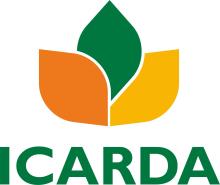Resource information
Jordan’s rangelands, the so called Badia, home of the Bedouins, are threatened through a combination of
over-exploitation of the ecosystem services and a changing climate towards drier seasons and highly
erratic rainfalls. In the recent decades, the once productive grazing lands transformed into sparsely
vegetated and crusted desert grounds not capable of retaining the sporadic rainwater within the landscape
- and consequentialsurface runoff inevitably acceleratessoil erosion and gullying. To counter-measure the
imminent rangeland degradation the International Center for Agricultural Research in the Dry Areas
(ICARDA) is investigating mechanized micro Water Harvesting (WH) based restoration technique using the
Vallerani plow. This technique intermediately breaks up the crusted surface soil layers and hard pans to
approximately 50cm depth. Thus, creating dispersed micro-catchments, well-protected and suitable for
the plantation ofshrub seedlings, supporting the initial vegetation growth and eventually leading to shrubisland
evolvement over the landscape. However, optimum design, particularly the spacing between the
WH plow lines, depend on various environmental conditions. In this research, Rangeland Hydrology and
Erosion Model (RHEM) was used to assess degraded rangeland hydrological response to transparently
suggest on WH layout optimized for the magnitudes and the occurrence probabilities of runoff, soil erosion
and sediment accumulation affecting the storage capacity of the micro-catchments. The study combined
physical based modeling and ground truthing through different runoff and sediment related experiments.
Preliminary results demonstrate good potential of the RHEM-based WH design approach; case study
results will be presented for the first time at the conference. Eventually, a fully developed rangeland
assessment system will support transparent target area selection and sound WH design interlinked with a
risk analysis approach that accounts for the variable environmental patterns of the Badia.


